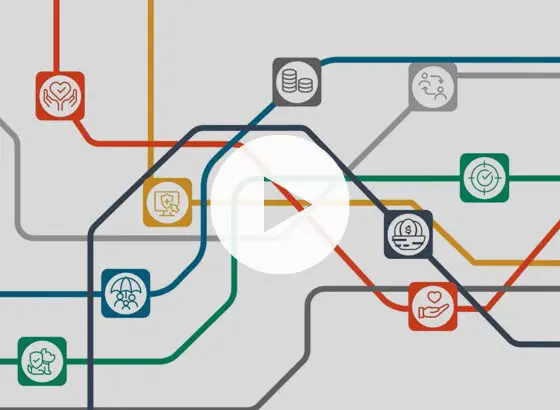A healthy employee is a happy employee. If you want your workforce to work to the best of their ability, you must take care of employee wellbeing. Workers today are far less willing to accept burnout and fatigue, and if pushed, will move on rather than tough it out.
It is imperative, then, that employee wellness be a top priority for your business. Without focusing on employee wellbeing, you will suffer high rates of turnover and low rates of productivity. We’ve found that employee benefits often have a high correlation with employee wellness, with 83% of businesses agreeing that employee benefits strongly impact the employee experience and retention.2
What do benefits mean to employee wellbeing?
Benefits can mean a lot of things to a lot of people. For some, it’s peace of mind knowing that flexible working hours can give them the tools to find the right work-life balance. For others, benefits can help them achieve financial goals or provide opportunities to study and expand their skillset. In all cases, poor engagement with your benefits package negatively impacts the employee experience, and this in turn negatively affects wellbeing.3
What can go wrong with poor employee wellbeing?
A strong and well-thought-out benefits package is at the core of an organization focused on employee wellbeing. Firms that concentrate on productivity and retention to the detriment of wellbeing will find the following issues:
- Decreased retention: employees are likely to leave for organizations that put a higher priority on their wellbeing
- Sunk cost: money spent on unused benefits could have been better spent elsewhere
- Missing institutional knowledge and operational gaps: as employees leave, they take bits of your organization with them, and you lose out on hours of training and years of knowledge
How to reflect on your benefits package with an eye toward wellbeing
Luckily, there are concrete steps you can take to improve your firm’s focus on employee wellbeing. Review your current benefits and critically analyze your offerings through the following lenses:
- Relevancy: Make sure your benefits are relevant to your employees. Oftentimes, you can find your organization paying for fringe benefits that few employees use, or benefits that are not suited for your employee population.
- Education: You could have the greatest health care package in the world, but if no one knows, it doesn’t mean much. Employees want to engage with your benefits but often do not know the breadth of options you are giving them. A strong educational and communication campaign can easily boost benefits engagement.
- Ease of access: Employees want to use their benefits, but they don’t want to jump through an endless series of hurdles to do so. Every barrier you put between them and their benefits is one more tick against wellbeing. Consider adopting a benefits administration platform such as bswift, which through an intuitive and easy-to-use interface makes accessing benefits smooth and simple.4
Don’t get left behind—prioritize wellbeing!
Employee wellbeing is central to your business operation. Nowadays, employees have more options than ever when it comes to work, and if they sense their wellbeing is suffering at your organization, there are few barriers blocking them transitioning elsewhere. Benefits will exist as your front-line defense against employee burnout, and the more care you put into your package the more your employees will reward you for the effort.
1 Beyond Benefits: Why Employee Benefits Engagement Is Vital To Your Business, 5
2 Beyond Benefits: Why Employee Benefits Engagement Is Vital To Your Business, 6
3 Beyond Benefits: Why Employee Benefits Engagement Is Vital To Your Business, 7
4 Beyond Benefits: Why Employee Benefits Engagement Is Vital To Your Business, 7-8






































